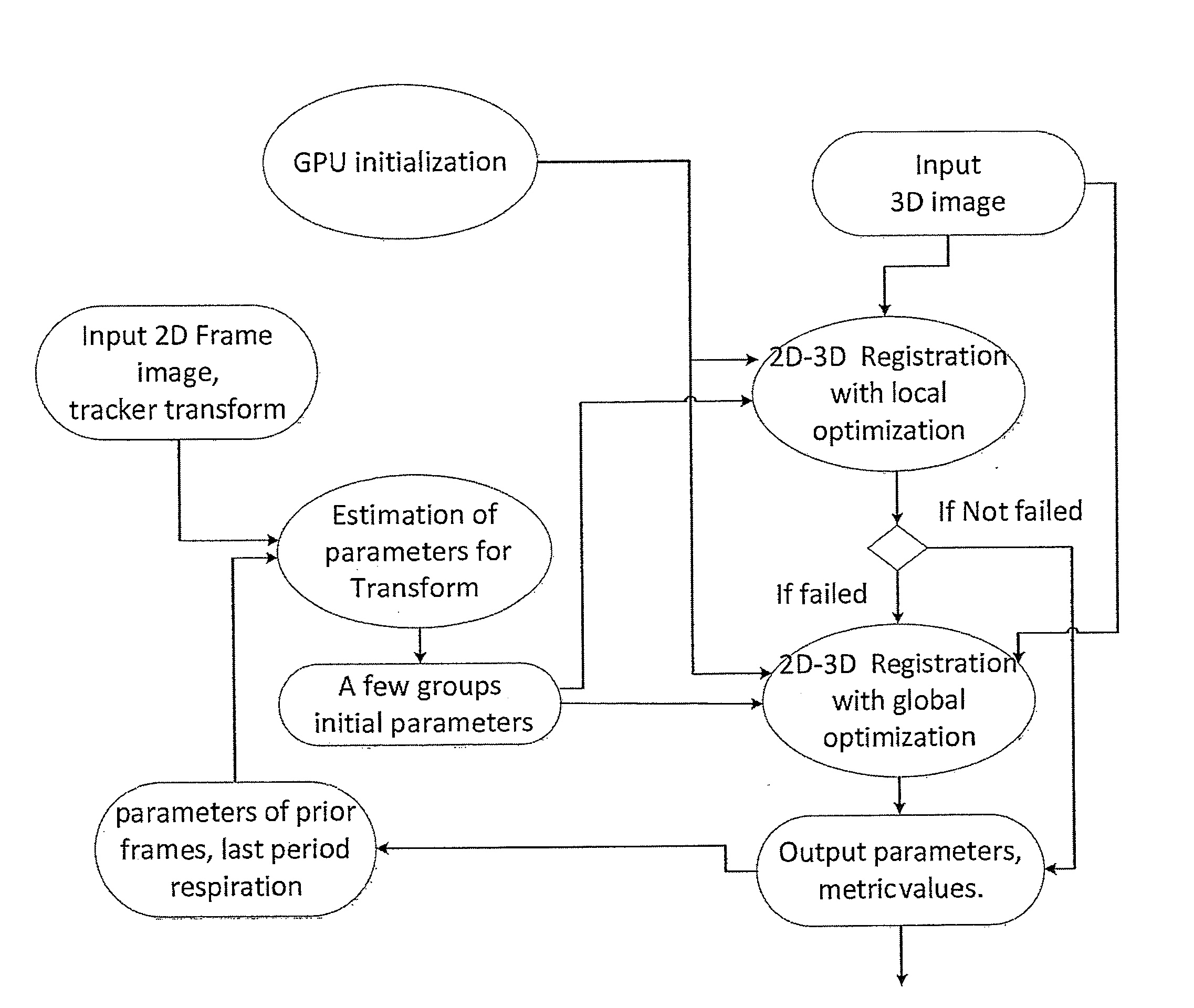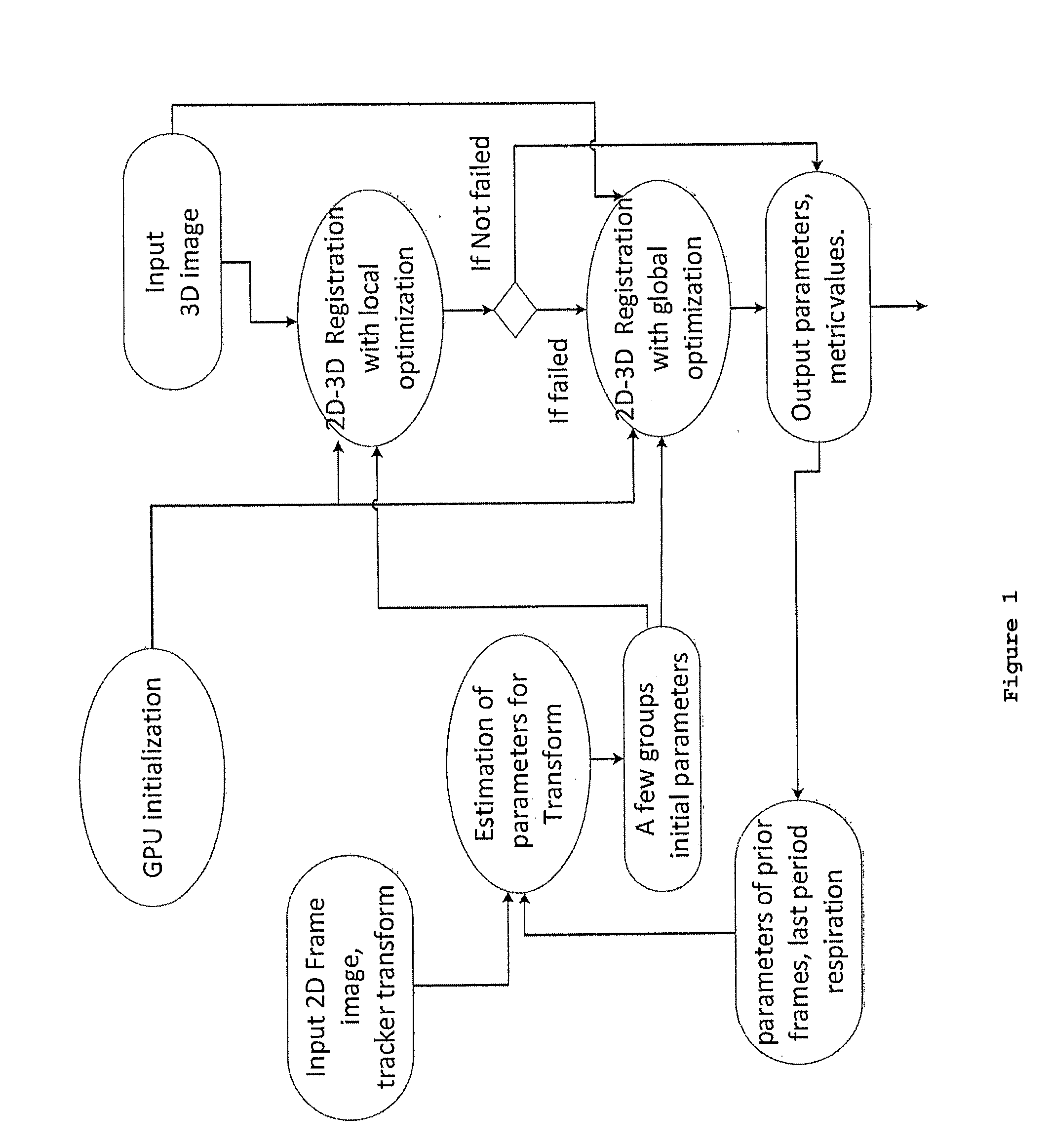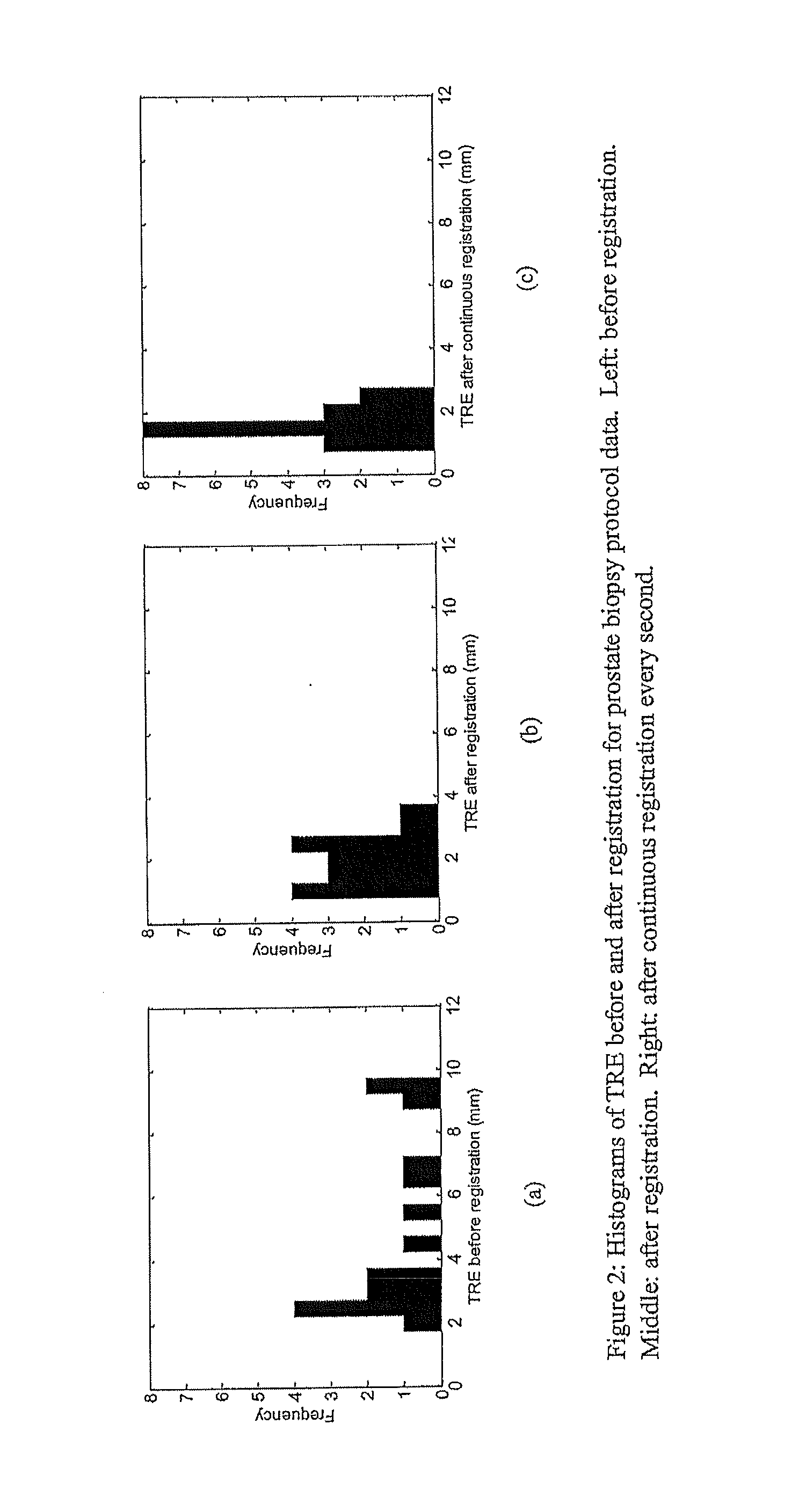2d-3d rigid registration method to compensate for organ motion during an interventional procedure
a registration method and interventional procedure technology, applied in the field of ultrasound imaging techniques, can solve the problems of requiring attention, difficult for the physician to accurately guide needles to suspicious locations, and negative biopsies, and achieve the effect of accelerating the registration
- Summary
- Abstract
- Description
- Claims
- Application Information
AI Technical Summary
Benefits of technology
Problems solved by technology
Method used
Image
Examples
Embodiment Construction
[0085]Ultrasound is a widely used imaging modality that is traditionally 2D. 2D ultrasound images remove 3D volume and three-dimensional information that allows for determining shapes, distances, and orientations. Ultrasound is used in medical, military, sensor, and mining applications
[0086]In interventional oncology, ultrasound is the preferred intra-operative image modality for procedures, including biopsies and thermal / focal ablation therapies in liver & kidney, laparoscopic liver surgery, prostate biopsy and therapy, percutaneous liver ablation, all other abdominal organs and ophthalmic intervention known to those skilled in the art. Some brain interventions also use ultrasound, although MR and CT are more common.
[0087]Ultrasound allows for “live information” about anatomical changes to be obtained with the requirement for further radiation dose to patient or physician. For image-guided interventions, it can be difficult for a surgeon to navigate surgical instruments if the targ...
PUM
 Login to View More
Login to View More Abstract
Description
Claims
Application Information
 Login to View More
Login to View More - R&D
- Intellectual Property
- Life Sciences
- Materials
- Tech Scout
- Unparalleled Data Quality
- Higher Quality Content
- 60% Fewer Hallucinations
Browse by: Latest US Patents, China's latest patents, Technical Efficacy Thesaurus, Application Domain, Technology Topic, Popular Technical Reports.
© 2025 PatSnap. All rights reserved.Legal|Privacy policy|Modern Slavery Act Transparency Statement|Sitemap|About US| Contact US: help@patsnap.com



